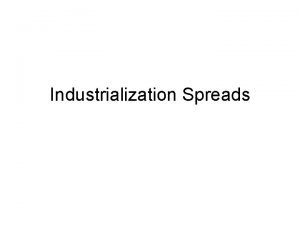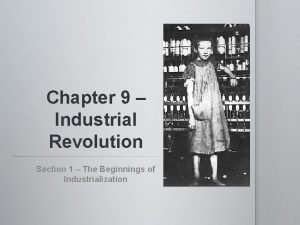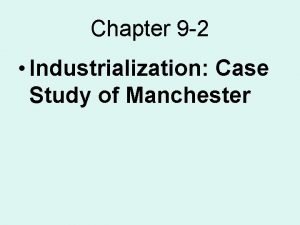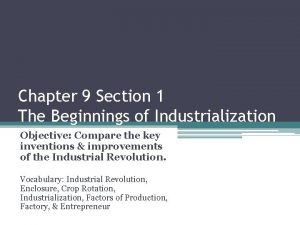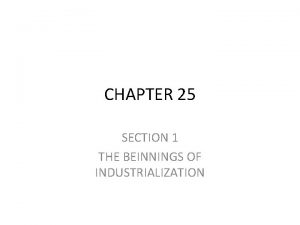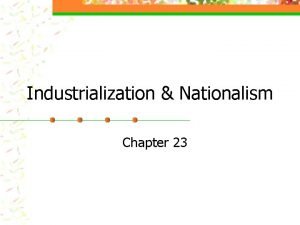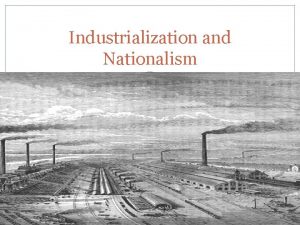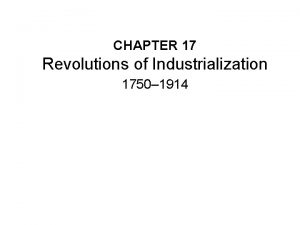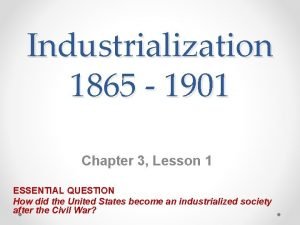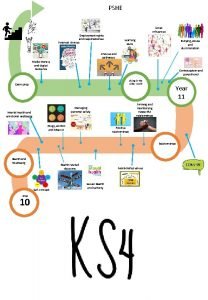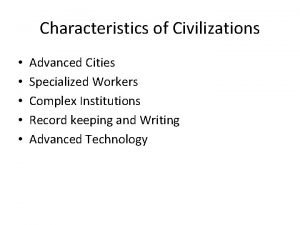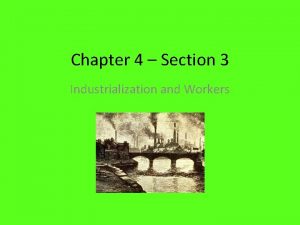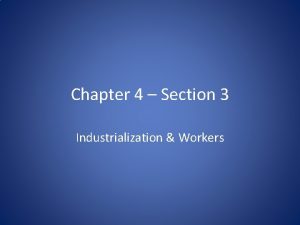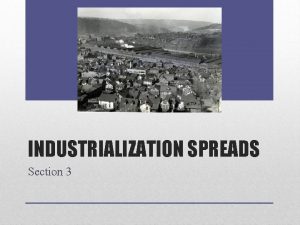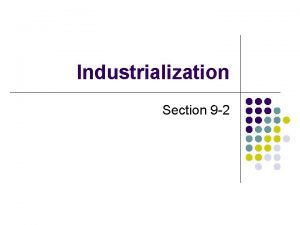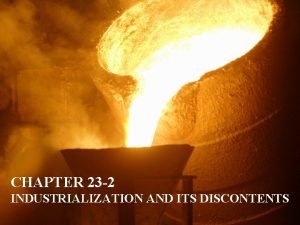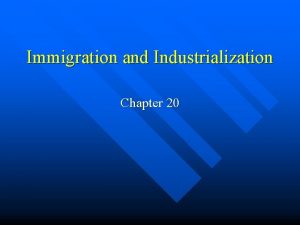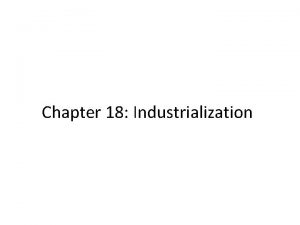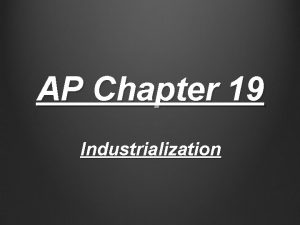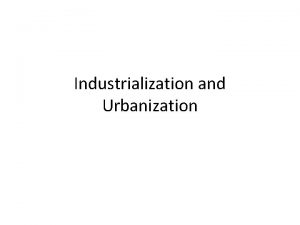Chapter 14 Section 3 Industrialization and Workers Industrialization



















- Slides: 19

Chapter 14 Section 3: Industrialization and Workers

Industrialization • Growth of industry

Growing American Force • Around 14 million people immigrated to U. S. between 1860 & 1900 • Population shift: 8 to 9 million Americans moved to cities from farms – Fled poor economic conditions on farms & lured by fast pace city life • Few African Americans migrated b/c jobs were closed to them in cities


Why entire Families worked • Wages were low & no one person could earn enough $ to provide for household • Girls left school at 12 or 13 to work so brothers could stay in school • Moms worked in factories if they could not make $ at home • If adults were sick/died or could not keep a job

Factory work in the 1800 s • Worked 12 hour days 6 days a week • Paid by piecework: workers paid not by the hour but by what they produce • Division of Labor: Factory workers performed one small task over and over; rarely saw finished product – Referred by factory owners as “hands” or “operatives” = interchangable

Factory work in the 1800 s cont. • Work conditions – Strict discipline: fired for being late or refusing to do task – Boring jobs: repeating tasks over and over – Noise deafening: no ear protection around loud machines – Ventilation poor • Effect: – Fatigue, faulty equipment, careless result in fires & accidents

What does the painting suggest about the conditions faced by workers?

Roles of Women in the work force • Employers excluded women from most skilled & highest paying jobs = worked simple machines • No chance to advance in factory work = performed only 1 part of sewing of a garment or item




Roles of children in work force • Made up 5% of industrial labor force • Children working meant difference between going hungry or having food on table • Dangerous work was unhealthy & stunted both body & mind






 Industrialization spreads chapter 25 section 3
Industrialization spreads chapter 25 section 3 Chapter 9 section 3 industrialization spreads
Chapter 9 section 3 industrialization spreads Chapter 9 section 3 industrialization spreads answer key
Chapter 9 section 3 industrialization spreads answer key The beginnings of industrialization chapter 9 section 1
The beginnings of industrialization chapter 9 section 1 Industrialization case study manchester
Industrialization case study manchester The beginnings of industrialization chapter 9 section 1
The beginnings of industrialization chapter 9 section 1 Beinnings
Beinnings Industrialization and nationalism chapter 23
Industrialization and nationalism chapter 23 Guided reading activity industrialization and nationalism
Guided reading activity industrialization and nationalism -have strength to match the growth of industrialization
-have strength to match the growth of industrialization Chapter 17 revolutions of industrialization
Chapter 17 revolutions of industrialization Chapter 3 industrialization (1865 to 1901 answers)
Chapter 3 industrialization (1865 to 1901 answers) Chapter 10 section 1 meiosis worksheet answer key
Chapter 10 section 1 meiosis worksheet answer key Radiation dose limits for workers and public pdf
Radiation dose limits for workers and public pdf Workers rights and responsibilities
Workers rights and responsibilities Legal responsibility in healthcare
Legal responsibility in healthcare Advanced cities specialized workers complex institutions
Advanced cities specialized workers complex institutions Workers rights and responsibilities
Workers rights and responsibilities Here comes charlie chapter 1
Here comes charlie chapter 1 Barangay health workers duties and responsibilities
Barangay health workers duties and responsibilities


